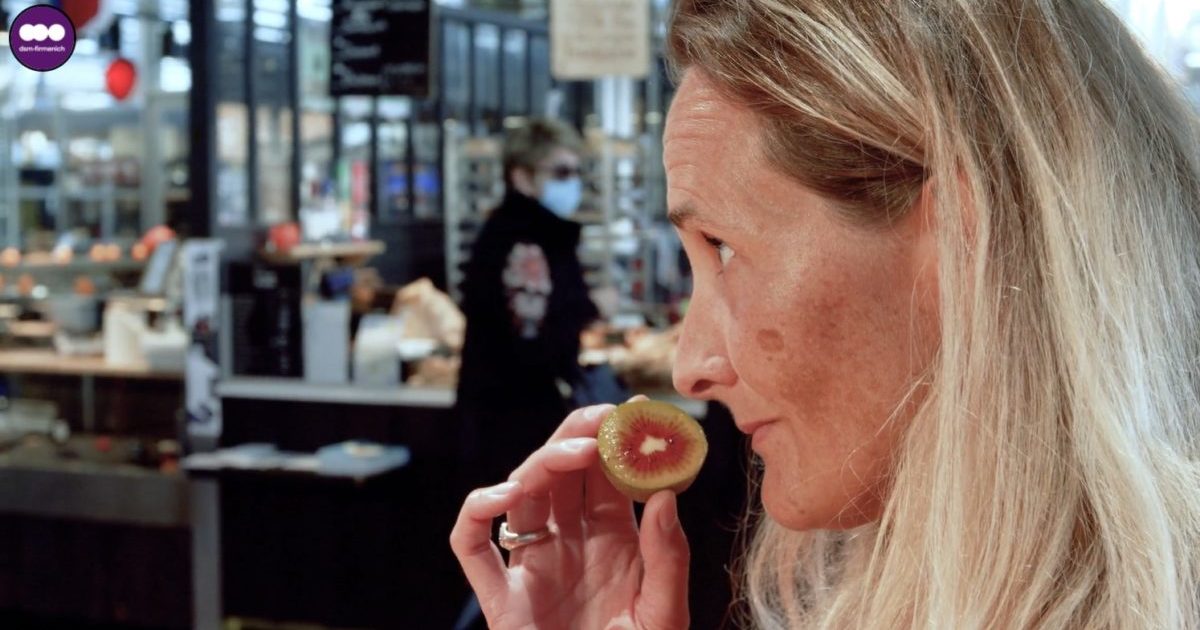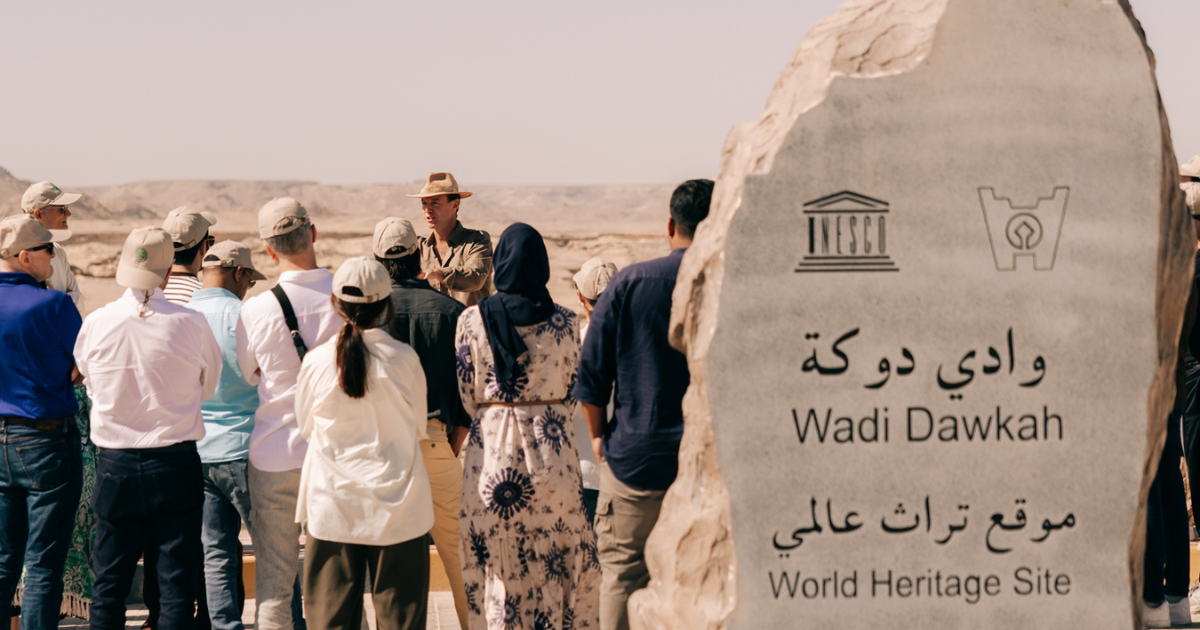Cette publication est également disponible en :
Français
For the past twenty years, DSM-Firmenich has been unveiling its vision of perfumery trends to its clients. The Mind Nose + Matter1An exclusive platform available to clients in New York, Paris, Dubai, Shanghai, Geneva, and São Paulo at the end of 2024. program explores major societal phenomena, giving free rein to perfumers in Paris and New York – offering a “preview” of the future.
Article written in partnership with DSM-Firmenich
This year, the theme of pleasure has taken center stage, oscillating between “attraction” and “avoidance.” The concept explores our relationship with well-being. “As American psychiatrist Anna Lembke explains in her book Dopamine Nation, pleasure and pain are often closely linked,” notes Justin Welch, Global Marketing Director for Perfumery. “For instance, eating spicy food brings both enjoyment and a burning sensation, just as the pleasure of running is proportional to the effort exerted. Today’s society tends to avoid discomfort, yet if the body produces too much dopamine2A hormone associated with pleasure. we become restless and struggle to manage our energy.”
In response, DSM-Firmenich has designed an immersive experience called Momentum, structured around four life moments: Push, Lift, Release, Rest—mirroring the four phases of abdominal breathing used for relaxation. This presentation also highlights ingredients from the Smell-The-Taste (STT) collection, an innovative palette designed to translate multisensory taste experiences into perfumes. “STT ingredients transpose flavors into fragrance, offering realistic interpretations of not only scents but also textures and sensations – salty, velvety, crispy…” explains Albane Furet, Perfumer and Flavorist responsible for STT creations at DSM-Firmenich.
The quest for realism
“We started by replicating nature’s scents using the NaturePrint process, which acts like an ‘olfactory photograph,’ capturing the volatile odor compounds of an organic material (biomass, objects, or even ambient air). Back in the lab, the perfumer analyzes these components using GC-MS (Gas Chromatography-Mass Spectrometry) and reconstructs the olfactory image with a blend of raw materials.” The team initially focused on floral and woody notes, but soon perfumers sought more fruity elements in their palette. “Capturing a fruit’s scent can be very complex; some have more taste than smell,” says Fabrice Pellegrin, Master Perfumer and Director of Innovation for Natural Products. Traditionally, fruity notes were evoked using molecules like gamma-undecalactone for peach or butyric bases for kiwi, but these lacked the sensation of actually biting into the fruit.
The Smell-the-Taste program, launched in the late 2000s, emerged from a collaboration between perfumers and flavorists. While flavorists work with salty or sweet bases that enhance taste, “perfumers work with a neutral base: alcohol,” explains Pellegrin.
In 2019, DSM-Firmenich took a major step forward by hiring Albane Furet, a flavorist who brought her expertise in taste to the world of fragrance. After spending nine years in Belgium formulating flavors for beverages, Albane Furet noticed key differences between the two fields: “I realized that perfumers before me used large amounts of ingredients like musks, whereas in flavors, these are rare – except for Exaltolide or Ambrettolide. The perfumer’s palette also contains more natural ingredients, and the price range is significantly higher.” She also noted a lack of “salty” notes in perfumery: “It felt like there was a gap compared to the culinary world’s diversity.” With STT ingredients, DSM-Firmenich has met this need, introducing notes like STT Soy Sauce, STT Black Olive, and STT Caviar.
The creation process
Once a project is identified, it begins with tasting – capturing sensations in the mouth and translating them into scent. Albane Furet carefully analyzes the sensory dimensions of the experience:
Sight: The shape, colors, aesthetic appeal of the dish.
Touch: The product’s texture, how it feels in the hand and mouth, its temperature.
Smell: The first aromas that entice us to take a bite or savor delicately.
Sound: The noise it makes while being eaten – crunchy, fizzy, etc.
Taste: The full spectrum of flavors, including the five basic tastes (sweet, salty, bitter, sour, umami), as well as somatosensory sensations – the coolness of mint, the warmth of alcohol, the spiciness of wasabi.
Then, Albane Furet switches to her perfumer role, crafting an accord that is first evaluated by Fabrice Pellegrin. Together, they compare the new fragrance to the original product: Is it figurative enough? Does it have a disruptive facet? Is it easy to use? Does it have a unique signature? Pellegrin explains: “An overly smooth accord wouldn’t be interesting. For example, STT Soy Sauce is very realistic and may surprise people, but its salty roughness is what makes it unique – just as an animalic facet enhances the naturality of jasmine.”
The development time for an STT ingredient varies: some are approved within a week, while others take years. “Finding consensus can be incredibly complex, as with matcha,” says Albane Furet. “Each perfumer had a different interpretation – powdered cocoa, green tea, algae… We even held a tasting session with a tea expert to highlight the challenge: the ingredient’s scent changes depending on its origin and whether it’s smelled as a powder or a beverage.”
To validate the olfactory accuracy, the team sometimes uses the AFFIRM technique, which analyzes volatile compounds released during chewing. “A nasal probe detects molecules perceived retronasally. We used it to study pomegranate, a fruit often requested by perfumers for its aesthetic appeal but with a subtle taste. The analysis revealed green and astringent markers in its seeds, essential for its olfactory translation.”
Once an STT ingredient is validated, it is tested in classic fragrance structures like cologne, fougère, or floral compositions in Grasse. Then, in Paris, a scientific team assesses its emotional attributes – pleasure, creaminess, surprise. Once approved, STT ingredients are available to perfumers, who can use them as raw materials or tweak them further.
Trends and regional preferences
Most requests for Smell-the-Taste come from the United States, a key market for gourmand and novelty fragrances. “It’s a fast-paced industry where we constantly need to offer new accords,” says Albane Furet. Some trends are fleeting, like the Negroni accord presented at Mind Nose + Matter. “The gelée-like cocktail was a sensation in New York in 2024 – capturing these trends in fragrance before they fade is crucial,” adds Justin Welch.
In Asia, DSM-Firmenich explores bold concepts like STT Wasabi or STT White Rabbit – a Chinese candy with milky caramelized notes. “It was a big hit among Chinese niche brands”, recalls Furet. Another milky STT ingredient, Infant Milk, was developed for Mind Nose + Matter, evoking nourishment with a subtle vanilla touch – a departure from classic creamy, buttery milk notes.
A diverse olfactory menu
Today, the Smell-the-Taste catalog features around 60 references: 50% fruits (Pink Guava STT, Passionfruit STT, Tomato Juice STT…), 40% gourmand notes (biscuit, milky, caramel…) and 10% unique accords (alcohols, vegetables, salty or marine notes).
“Best-sellers include Red Apple STT for its power and Whipped Cream STT, a light and airy vanilla,” says Albane Furet. Some accords are already on the market, like STT Buckwheat Tea in Kenzo’s Ikebana Sakura by Alexandra Monet et Alberto Morillas or STT Caviar in Mauboussin’s Caviar Addiction created by Florian Gallo.
For the future? Lighter gourmand scents, subtle sugars, and sweet-salty accords. A promising creation is Brûler, a banana-caramel fragrance enhanced by STT Soy Sauce, developed by Amandine Clerc-Marie. And perhaps the next challenge: capturing the elusive umami!








Comments